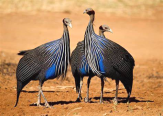
科目: 來源: 題型:
【題目】He is a newcomer in the team, but I have the __________ that I’ve seen that man before.
A.function B.impression
C.comprehension D.association
查看答案和解析>>
科目: 來源: 題型:
【題目】Why does the woman want to buy a heavy coat for Jimmy?
A. Jimmy will go camping in the mountains.
B. Winter is coming soon.
C. Jimmy has caught a bad cold.
查看答案和解析>>
科目: 來源: 題型:
【題目】We are pleased to see the suggestion ______ in many schools to help free students from the heavy schoolwork.
A.adoptedB.adopting
C.adoptD.to adopt
查看答案和解析>>
科目: 來源: 題型:
【題目】Where does the woman want to go?
A. The supermarket.B. The kindergarten.C. The book store.
查看答案和解析>>
科目: 來源: 題型:
【題目】--- How old can you guess your new English teacher is?
--- It’s hard to say.But I guess him to be _________ between 35 and 40.
A.anything B.anywhere C.anybody D.anyway
查看答案和解析>>
科目: 來源: 題型:
【題目】The nurse treated the naughty boy very kindly, but her patience ________ at last.
A. used up B. gave out C. run out D. was run out
查看答案和解析>>
科目: 來源: 題型:
【題目】 A group of blue-faced birds step through the grass shoulder to shoulder, red eyes looking around. They look like middle schoolers seeking a cafeteria table at lunchtime. Perhaps they’re not so different.

A new study, led by Damien Farine, an ornithologist who studies collective behaviour, shows that the vulturine guineafowl of eastern Africa, like humans, have multilevel societies. In the past, scientists assumed such social structures required a lot of brainpower. But the pea-brained guineafowl are revealing the faults in that assumption.
These large birds wander across the landscape in packs, often walking so closely that their bodies touch. They may fight each other to maintain their strict hierarchies (等級制度), but at other times they engage in friendly behaviours like sharing food.
Suspecting the guineafowl might have a social structure, Dr. Farine and his colleagues began a thorough study of their society. For a whole year, they made daily observations of 441 birds. Coloured leg bands in unique combinations let researchers tell the black-and-blue birds apart. They also attached GPS devices to the backs of 58 birds, which let them see exactly where every group went, 24 hours a day.
The findings of the research suggest that the vulturine guineafowl have a multilevel society. There are groups within groups within the population as a whole. There even seem to be groups of friends within the small groups. This is the first time anyone has observed such a society in a bird.
And Dr. Farine emphasizes this particular bird’s tiny brain size: “They don’t only have small brains relative to mammals (哺乳動物), they also have quite small brains relative to other birds,” he said.
According to him, living in this kind of society might actually make it easier to keep track of the social order. For example, if groups are stable and a bird can identify just one or two individuals within a group, it knows which group it’s looking at — no need for a brain that can recognize every single animal. Multilevel societies also let animals adjust their group sizes based on whatever challenges they’re facing. Depending on what enemies or resources are around, it might make sense to travel in a combined group rather than a smaller one.
“Having a multilevel structure may not require having a large brain,” Dr. Farine said. There may be more birds and other animals out there that, although small-brained, have societies as many-leveled as our own.
【1】According to the passage, what inspired Dr. Farine to carry out the study?
A.The guineafowl’s social behaviour.
B.Previous assumptions about birds.
C.His interest in animal brainpower.
D.The faults in earlier research.
【2】What is Paragraph 4 mainly about?
A.The research subjects.B.The research methods.
C.The research findings.D.The research equipment.
【3】What can be learned from the passage?
A.Complex social systems can be a disadvantage to the guineafowl.
B.The guineafowl are good at recognizing individuals in a group.
C.Birds maintain social order by travelling in combined groups.
D.Small-brained animals can form multilevel societies.
【4】What is the main purpose of the passage?
A.To present the findings of a study of the guineafowl.
B.To explain the interaction patterns in multilevel societies.
C.To introduce a new approach to observing the guineafowl.
D.To uncover clues about how complex societies are formed.
查看答案和解析>>
科目: 來源: 題型:
【題目】When you have western food, you should use knife and fork properly. The underlined word means “__________".
A. in a quick way
B. in the proper way
C. in a different way
D. in the usual way
查看答案和解析>>
科目: 來源: 題型:
【題目】To his disappointment, not a single gift _____ on his birthday.
A. he received B. had he received
C. did he receive D. received he
查看答案和解析>>
湖北省互聯網違法和不良信息舉報平臺 | 網上有害信息舉報專區(qū) | 電信詐騙舉報專區(qū) | 涉歷史虛無主義有害信息舉報專區(qū) | 涉企侵權舉報專區(qū)
違法和不良信息舉報電話:027-86699610 舉報郵箱:58377363@163.com